Related Research Articles

Sir Edward William Elgar, 1st Baronet, was an English composer, many of whose works have entered the British and international classical concert repertoire. Among his best-known compositions are orchestral works including the Enigma Variations, the Pomp and Circumstance Marches, concertos for violin and cello, and two symphonies. He also composed choral works, including The Dream of Gerontius, chamber music and songs. He was appointed Master of the King's Musick in 1924.
An oratorio is a large musical composition for orchestra, choir, and soloists. Like most operas, an oratorio includes the use of a choir, soloists, an instrumental ensemble, various distinguishable characters, and arias. However, opera is musical theatre, while oratorio is strictly a concert piece – though oratorios are sometimes staged as operas, and operas are sometimes presented in concert form. In an oratorio, the choir often plays a central role, and there is generally little or no interaction between the characters, and no props or elaborate costumes. A particularly important difference is in the typical subject matter of the text. Opera tends to deal with history and mythology, including age-old devices of romance, deception, and murder, whereas the plot of an oratorio often deals with sacred topics, making it appropriate for performance in the church. Catholic composers looked to the lives of saints and histories from the Bible while Protestant composers only to Biblical topics. Oratorios became extremely popular in early 17th-century Italy partly because of the success of opera and the Catholic Church's prohibition of spectacles during Lent. Oratorios became the main choice of music during that period for opera audiences.

The Birmingham Triennial Musical Festival, in Birmingham, England, founded in 1784, was the longest-running classical music festival of its kind. It last took place in 1912.
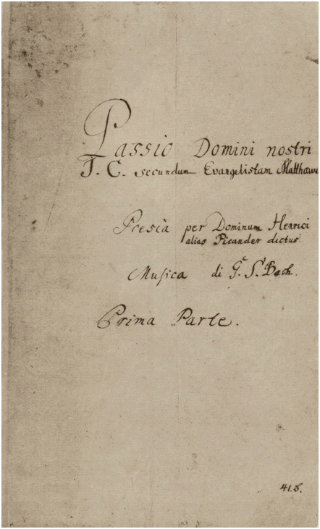
The St Matthew Passion, BWV 244, is a Passion, a sacred oratorio written by Johann Sebastian Bach in 1727 for solo voices, double choir and double orchestra, with libretto by Picander. It sets the 26th and 27th chapters of the Gospel of Matthew to music, with interspersed chorales and arias. It is widely regarded as one of the greatest masterpieces of Baroque sacred music. The original Latin title Passio Domini nostri J.C. secundum Evangelistam Matthæum translates to "The Passion of our Lord J[esus] C[hrist] according to the Evangelist Matthew".

The Dream of Gerontius, Op. 38, is a work for voices and orchestra in two parts composed by Edward Elgar in 1900, to text from the poem by John Henry Newman. It relates the journey of a pious man's soul from his deathbed to his judgment before God and settling into Purgatory. Elgar disapproved of the use of the term "oratorio" for the work, though his wishes are not always followed. The piece is widely regarded as Elgar's finest choral work, and some consider it his masterpiece.
Christus am Ölberge, Op. 85, is an oratorio by Ludwig van Beethoven portraying the emotional turmoil of Jesus in the garden of Gethsemane prior to his crucifixion. It was begun in the fall of 1802, soon after his completion of the Heiligenstadt Testament, as indicated by evidence in the Wielhorsky sketchbook. The libretto in German is by the poet Franz Xaver Huber, editor of the Wiener Zeitung, with whom Beethoven worked closely. It was written in a very short period; in a letter to Breitkopf & Härtel written shortly after the oratorio's completion, Beethoven spoke of having written it in "a few weeks", although he later claimed that the piece required no more than 14 days to complete. It was first performed on April 5, 1803 at the Theater an der Wien in Vienna; in 1811, it was revised by Beethoven for publication by Breitkopf & Härtel. The 10 years that passed between the composition of the work and its publication resulted in its being assigned a relatively high opus number. The piece premiered in the United States in 1809; it was Beethoven's first success in the United States.
The Music Makers, Op. 69, is a work for contralto or mezzo-soprano, chorus and orchestra composed by Edward Elgar. It was dedicated to "my friend Nicholas Kilburn". It was first performed at the Birmingham Festival on 1 October 1912, conducted by the composer, with Muriel Foster as the soloist.
The Kingdom, Op. 51, is an English-language oratorio composed in 1906 by Edward Elgar. It was first performed at the Birmingham Music Festival on 3 October 1906, with the orchestra conducted by the composer, and soloists Agnes Nicholls, Muriel Foster, John Coates and William Higley. The dedication is "A. M. D. G." Elgar wrote The Kingdom for choral and instrumental forces.
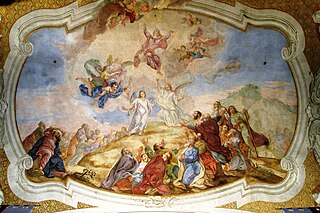
Lobet Gott in seinen Reichen, BWV 11, known as the Ascension Oratorio, is an oratorio by Johann Sebastian Bach, marked by him as Oratorium In Festo Ascensionis Xsti, composed for the service for Ascension and probably first performed on 15 May 1738.
Christus is an oratorio by the Hungarian composer and pianist Franz Liszt. The oratorio takes the traditional plot of Jesus Christ's life from his birth to his passion and resurrection, using Bible texts, and is thus somewhat reminiscent of another famous religious work, Messiah by George Frideric Handel.

Frederic William Austin was an English baritone singer, a musical teacher and composer in the period 1905–30. He is best remembered for his restoration and production of The Beggar's Opera by John Gay and Johann Christoph Pepusch, its sequel, Polly, in 1920–23, and for his popularization of the melody of the carol The Twelve Days of Christmas. Austin was the older brother of the composer Ernest Austin (1874–1947).

The Easter Oratorio, BWV 249, is an oratorio by Johann Sebastian Bach, beginning with Kommt, eilet und laufet. Bach composed it in Leipzig and first performed it on 1 April 1725.

The Crucifixion: A Meditation on the Sacred Passion of the Holy Redeemer is an oratorio for a SATB choir and organ composed by John Stainer in 1887, with text by W J Sparrow Simpson. The piece relates the Biblical narrative of the Passion and Crucifixion of Jesus. It is particularly noted for the Christian hymn, All for Jesus, All for Jesus.
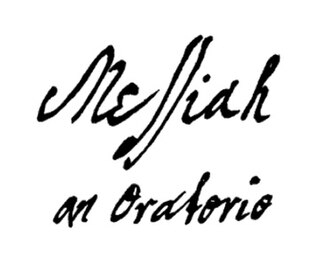
Messiah, the English-language oratorio composed by George Frideric Handel in 1741, is structured in three parts, listed here in tables for their musical setting and biblical sources.

Messiah, the English-language oratorio composed by George Frideric Handel in 1741, is structured in three parts. This listing covers Part II in a table and comments on individual movements, reflecting the relation of the musical setting to the text. Part I begins with the prophecy of the Messiah and his birth, shows the annunciation to the shepherds and reflects the Messiah's deeds on earth. Part II covers the Passion in nine movements including the oratorio's longest movement, an air for alto He was despised, then mentions death, resurrection, ascension, and reflects the spreading of the Gospel and its rejection. The part is concluded by a scene called "God's Triumph" that culminates in the Hallelujah chorus. Part III of the oratorio concentrates on Paul's teaching of the resurrection of the dead and Christ's glorification in heaven.

Messiah, the English-language oratorio composed by George Frideric Handel in 1741, is structured in three parts. This listing covers Part III in a table and comments on individual movements, reflecting the relation of the musical setting to the text. Part I begins with the prophecy of the Messiah and his birth, shows the annunciation to the shepherds as a scene from the Gospel of Luke, and reflects the Messiah's deeds on Earth. Part II covers the Passion, death, resurrection, ascension, and the later spreading of the Gospel. Part III concentrates on Paul's teaching of the resurrection of the dead and Christ's glorification in heaven.

Johann Sebastian Bach's St Matthew Passion, BWV 244, is structured on multiple levels: the composition is structured in three levels of text sources and by the different forms that are used for musical expression.
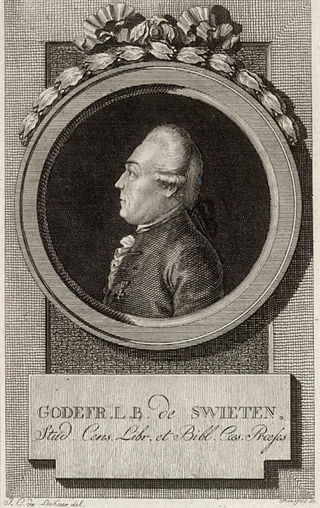
Der Messias, K. 572, is Wolfgang Amadeus Mozart's 1789 German-language version of Messiah, George Frideric Handel's 1741 oratorio. On the initiative of Gottfried van Swieten, Mozart adapted Handel's work for performances in Vienna.

Die Auferstehung und Himmelfahrt Jesu is an oratorio by Carl Philipp Emanuel Bach to a text by Karl Wilhelm Ramler on the subject of the resurrection and ascension of Jesus Christ. The first documented performance evidently took place in 1774, and was first publicly performed in 1778; it was further revised between 1778 and 1780. Along with the other oratorios that CPE Bach composed, Die Auferstehung und Himmelfahrt Jesu has been described as being "among the most important Protestant vocal works of the second half of the 18th century".
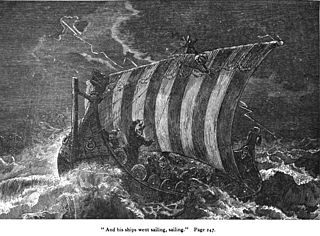
King Olaf is a cantata by British composer Edward Elgar scored for soloists, chorus and orchestra. It was commissioned for the North Staffordshire Music Festival of 1896, where it was well received. It went on to be performed by choral societies in other parts of the country.
References
- ↑ Kingsbury, Stephen. The Apostles at AllMusic . Retrieved 2014-07-27.